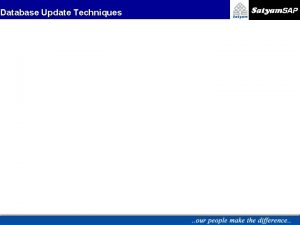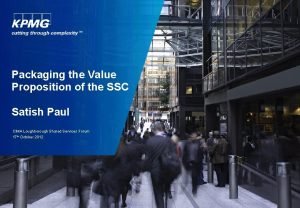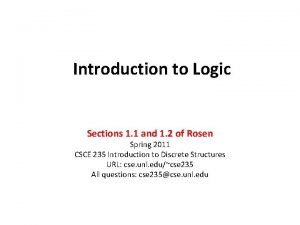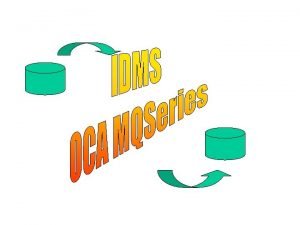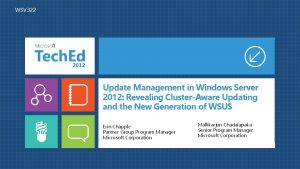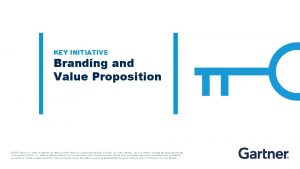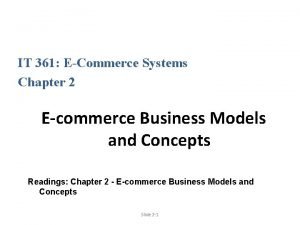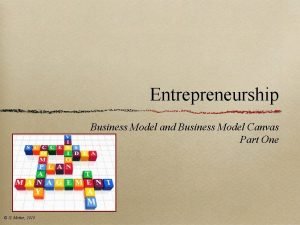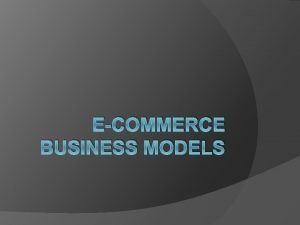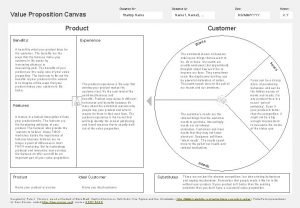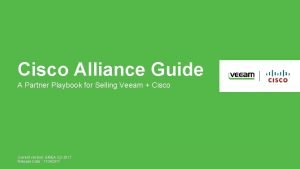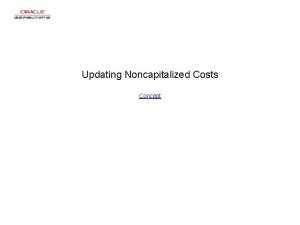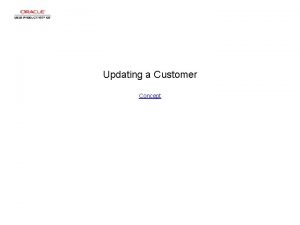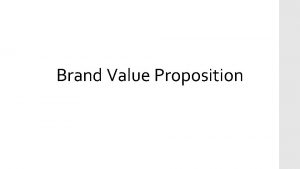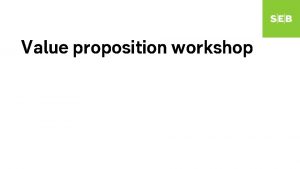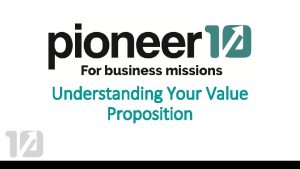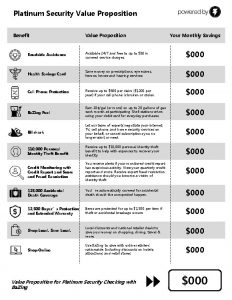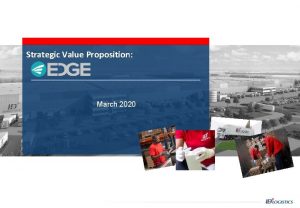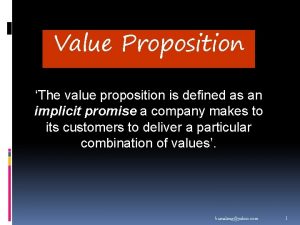Updating the Value Proposition Using Services to Define
















- Slides: 16

Updating the Value Proposition: Using Services to Define Your IT Organization Mark Askren – CIO, University of Nebraska – Lincoln Kimberly Harper – Director of Portfolio Management, University of Nebraska – Central Administration 1

Higher Ed IT in Crisis? Experiencing Pressure From Both Sides • Demand for IT services grows, while resources stay the same or decrease (“new normal”) 2

Change or Fade Away… Short Term Challenge is how to: • Further cut already reduced budgets • Continue to produce core mission services and innovation to meet increasing demand Longer Term Challenge is: • How do we describe ourselves and define our value? Traditional Approach New Approach Project lists with updates Services offered Organizational charts Technology forecasts Security risks & mitigation strategies Budget transparency 3

Choosing Change Our Goals • Create a better understanding of our IT organizations • Validate that our priorities are aligned and funding justified • Identify efficiency & collaborative opportunities • Improve strategic planning & decision-making, and invest accordingly • Stay relevant • Identify opportunities for services improvements 4

An Approach: Services Inventory Scope • • Identify all services provided Identify all assets that support each service Identify customers who utilize each service Identify total cost of each service Methodology • Consultant-led staff interviews • Developed service offering categories, descriptions and characteristics • Developed financial cost model for services 5

An Approach: Services Inventory Deliverables CSN UNL Data Management & Analytics E-Mail, Communication & Collaboration Hardware & Software Support Data Management & Analytics E-Mail, Communication & Collaboration Hardware, Hosting & Storage Internet & Network Connectivity IT Governance & Service Management User Access & Security Internet, Phone & Network Communications IT Governance & Service Management User Access & Security User Training & Community Enterprise Information Systems Printing, Forms & Output Management Infrastructure Hosting User Training & Community Web Development Support Classroom, Lab & Instructional Resources Consulting & Project Management Development, Integration & Support Technology Innovation Support Technology Sales & Repairs 6

An Approach: Services Inventory Different Perspective Cross-functional contributions vs. “Silo” thinking 7

The Key Lessons Learned Using IT services as the value definition is more effective than the traditional organization structure and major projects view Traditional IT becomes Service-Oriented Technology focus Process focus “Fire-fighting” Preventative Reactive Proactive Users Customers Centralized, done in-house Distributed, sourced Isolated, silos Integrated, enterprise-wide “One off”, ad hoc Repeatable, accountable Informal processes Formal best practices IT internal perspective Business perspective Operational specific Service orientation 8

The Key Lessons Learned • Decisions to continue, discontinue or develop new services have wide-spread implementations • Services inventorying and management is a longterm commitment • Challenges: – Moving from team-focus to service-focus – Resource-facing vs. Customer-facing services – Not getting trapped by what you know – Drawing lines in the sand – Staff buy-in 9

Positive Outcomes Focusing on services… Improves communication and understanding: For Executive Leadership… 10

Positive Outcomes For Customers… Many other IT organizations have created online Service Catalogs: Examples: Stanford University: https: //itservices. stanford. edu/services Ohio State University: http: //cio. osu. edu/services/ University of Texas at Austin: http: //www. utexas. edu/its/whatweoffer/ 11

Positive Outcomes Focusing on services… • Provides the starting point for measuring our efficiency • Helps establish a framework for collaboration on campus, within the system, and with our peers in the Big. Ten CIC and beyond 12

Positive Outcomes Focusing on services… • Supports our Strategic Planning & Decision Making Furthers our understanding of how changes in IT services impact the University (e. g. , what functionality is affected, which customers are affected, does it have a global impact or is it focused to a small community) Enables more accurate and timely analysis of sourcing alternatives Helps establishes the culture of continual re-evaluation of services (create new, retire existing, combine, co-source, etc. ) 13

Going Forward Today’s Requirements for Effective IT Leadership • Explain our value in non-technical terms • Align our resources with strategic differentiators • Take the cost out of core services and infrastructure • Utilize service catalogs & request processes • Implement ongoing customer feedback process • Be effective change agents and risk-positive 14

The Updated Value Equation • Expect intense scrutiny of what we deliver, and how much it costs, compared to peer institutions • Shared services: The era of one (or 20+) full-service IT department on the campus is over • It is critical to be able to define our service requirements and costs • Collaboration is now the key leadership skill, and the value of our service catalogs is how we’ll be judged 15

Contact Information Mark Askren maskren 2@unl. edu Kimberly Harper kkharper@nebraska. edu 16
 Perform on commit vs update task
Perform on commit vs update task Shared services value proposition
Shared services value proposition What is logically equivalent
What is logically equivalent Batch updating (for oca & db)
Batch updating (for oca & db) The updating of accounts is called the adjusting process.
The updating of accounts is called the adjusting process. Sccm cluster aware updating
Sccm cluster aware updating Contoh value creation adalah
Contoh value creation adalah Value proposition canvas
Value proposition canvas Customer segment value proposition
Customer segment value proposition Employee value proposition voorbeeld
Employee value proposition voorbeeld Gartner value proposition
Gartner value proposition Value proposition ecommerce
Value proposition ecommerce Azure monetary commitment
Azure monetary commitment Lego business model canvas
Lego business model canvas The basic value proposition of community providers is:
The basic value proposition of community providers is: Value proposition
Value proposition Cisco gold partner benefits
Cisco gold partner benefits
